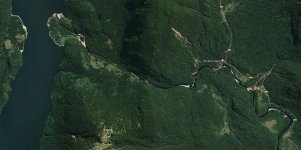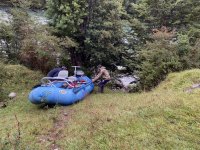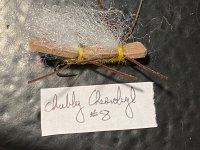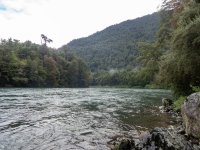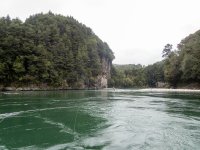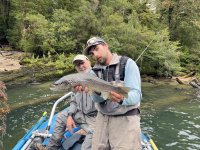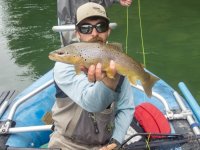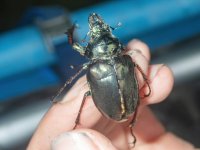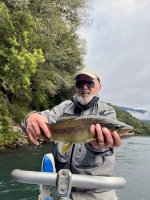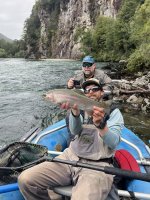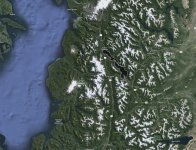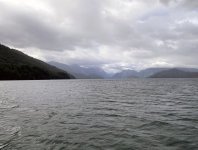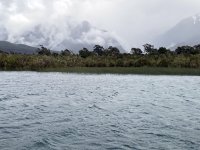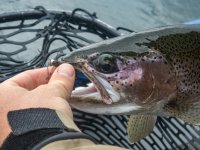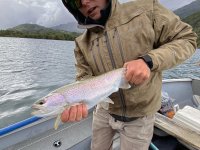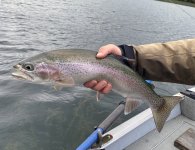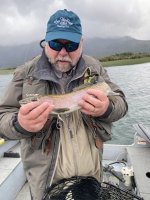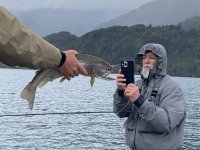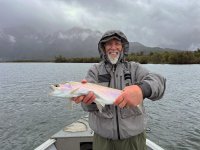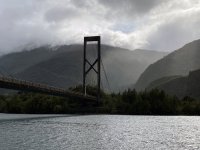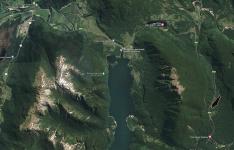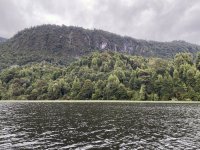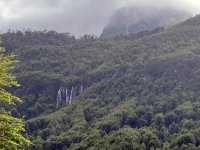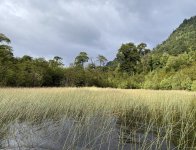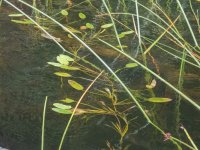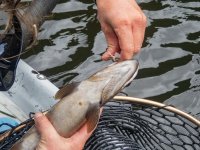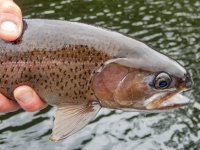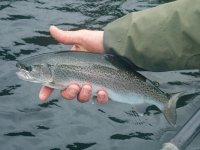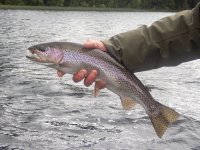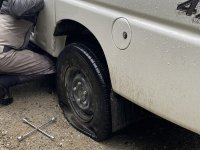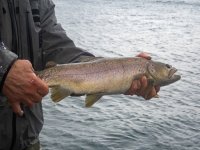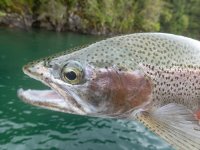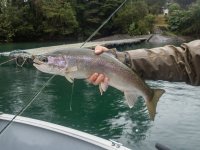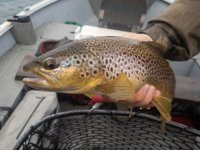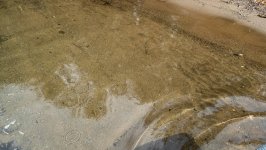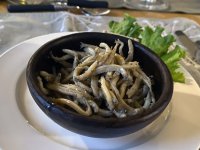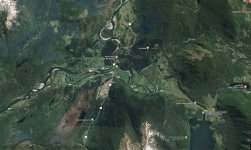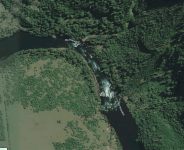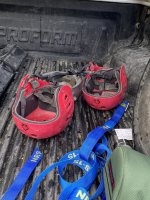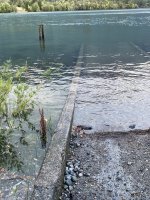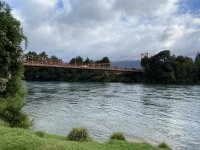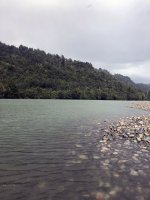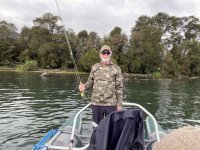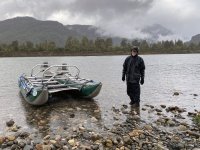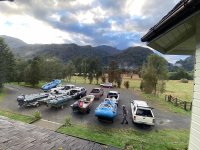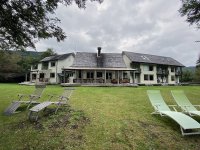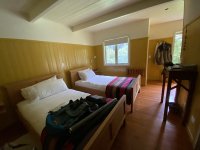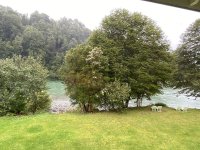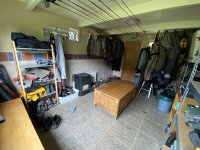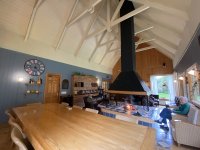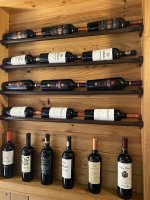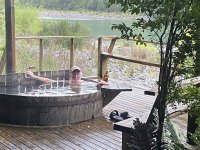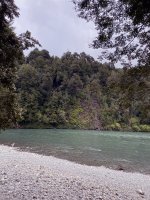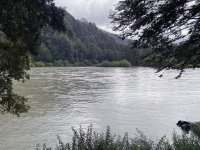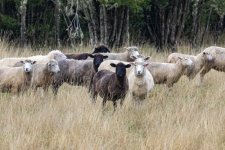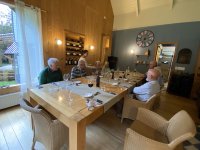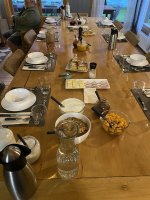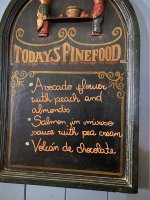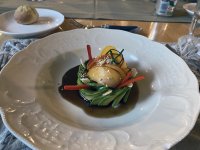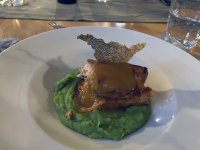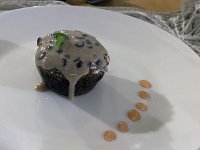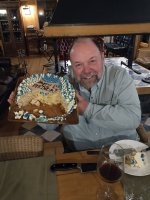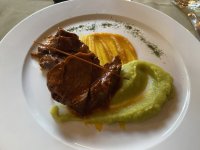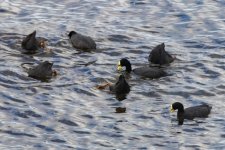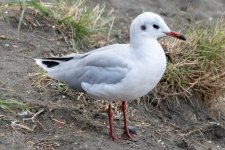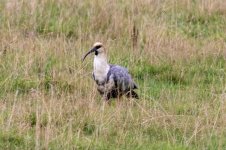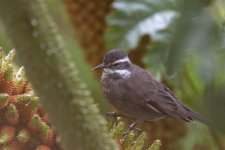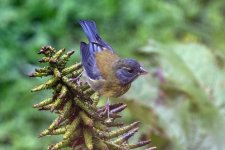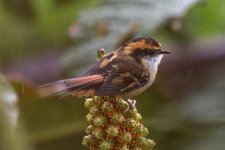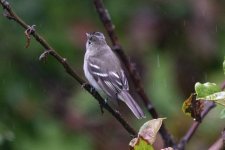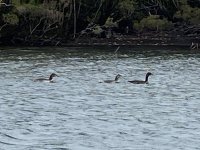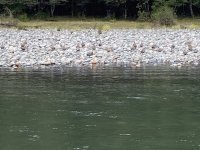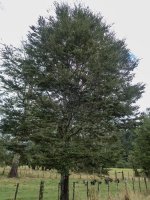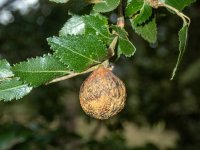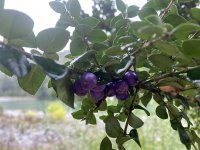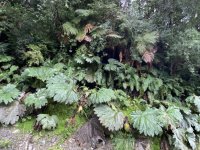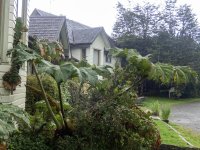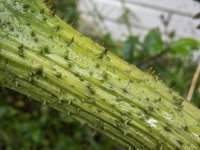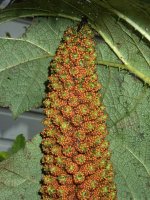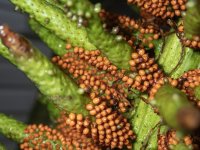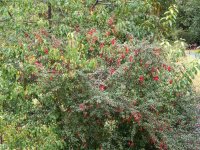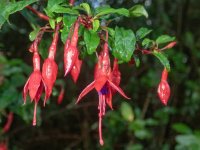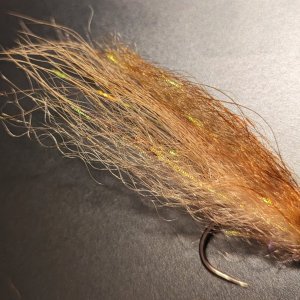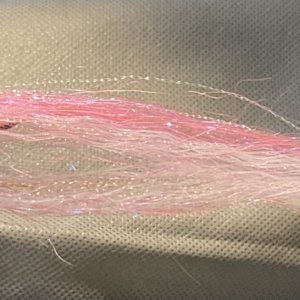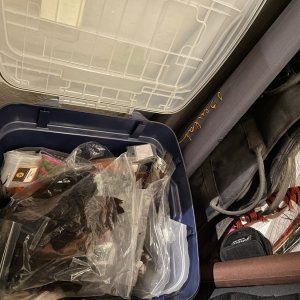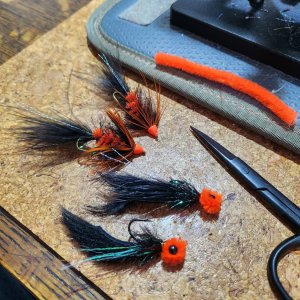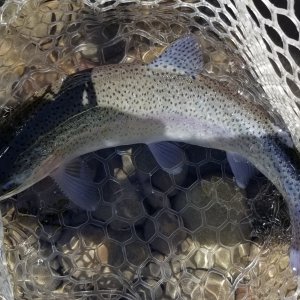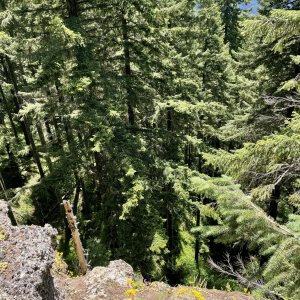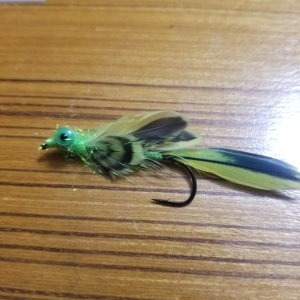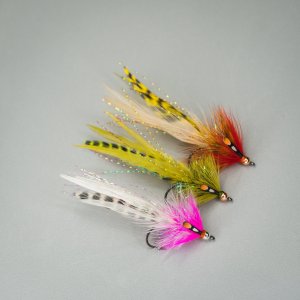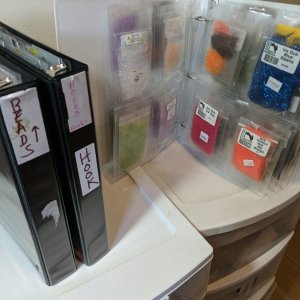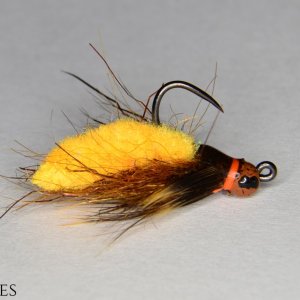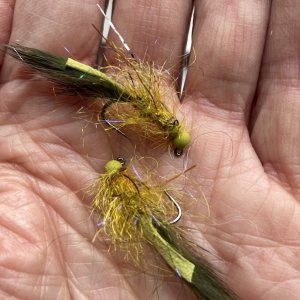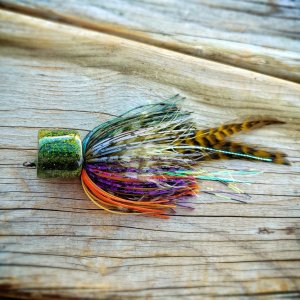Part 1 of 6: A wet, windy week at Patagonian BaseCamp in mid-March.
Preamble: This adventure to Chile had a long gestation, enduring several twists since its inception in 2018-2019. The initial plan was for 6 of us, long-time friends from fishing the St. Joe River in Idaho and Rock Creek in Montana, to travel to Kamchatka in summer 2021 for a weeklong adventure drifting a river there for big rainbows. Booking through the Fly Shop in Redding, Tim had done a similar Kamchatka float trip previously and wanted to share this unique adventure with us – fishing mouse flies to huge rainbows. Then, early in 2020, COVID hit and shut down all travel. The Fly Shop decided to push their summer 2020 bookings to summer 2021 and our summer 2021 booking to summer 2022. But travel was still restricted when summer 2021 rolled around and they repeated the process. Thus, we were scheduled for summer 2023 at earliest. Then, that little kerfuffle broke out between Ukraine and Russia and none of us wanted to travel to Mother Russia under the circumstances.
So, we began to consider other options, such as Alaska in summer or New Zealand or Chile / Argentina in our winter (their summer). These Southern hemisphere options became more viable for me when I retired and could travel at will in winter. We researched various opportunities and decided on the Patagonian BaseCamp. It was highly recommended and offered diverse fishing options. The only time frame that could accommodate a group of our size there was in March, at the end of their season (typically, from after Xmas through mid-March). One original couple had already booked a Caribbean cruise for this time window and had to drop out. But Tim’s brother, Tom, decided to join us. There would be five fishers in our group.
During the long gestation of this trip, members of our group had suffered a) substantial lower back problems, b) sleep apnea, c) diabetes, d) a heart attack, e) a replaced hip, f) a pulmonary embolism, and other health issues. To some extent, our thoughts were “go now while we can…”. It also helped that at Patagonian FishCamp, much / all of the fishing can be done from boats, limiting the need to wade (back and hip issues…). And here we are.
We received a detailed list of items to pack from the Fly Shop. The fly list was heavy on large nymphs (e.g., Pat’s stoneflies, prince nymphs),
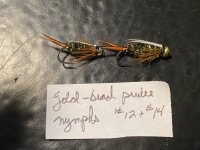
streamers (crystal buggers),
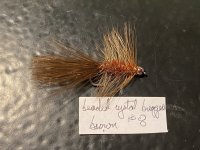
and foam flies (Chernobyls and their offspring).
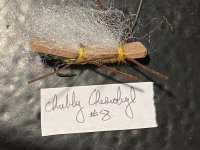
My initial visions of wet wading in shorts and a rash guard on a warm sunny day (you know, Idaho and Montana in summer) casting to big rising trout changed radically as I focused on the weather forecasts for early March in the region. Shit, it would be cold. And as the departure day came closer, the local forecasts were for rain, lots of rain. So, lighter shirts and a fleece vest were replaced by thermal undershirts, heavy rain gear, and a full fleece jacket – wise moves it proved.
Four flights and three days after departing Seattle, I arrived at Patagonian BaseCamp on the banks of the Rio Palena for a week of fishing a remote location.
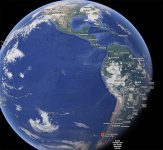
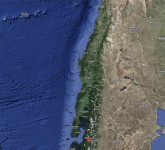
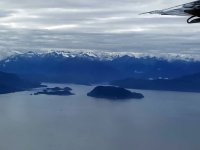
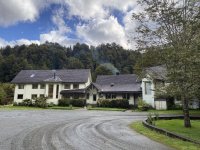
The lodge’s location just off Hwy. 7, the major road running N-S through Patagonia, provides access to a number of rivers and lakes. The lodge lies in a north-south valley between two sections of the Andes. [We should have been able to see glacially-covered mountains west and east of the lodge, but the low clouds all week blocked any view of the peaks.]. This is one of the narrower sections of Chile (already a narrow country) with the ocean only 40 miles to the west and the border with Argentina about 60 miles to the east. Multiple rivers and lakes drain from the mountains.
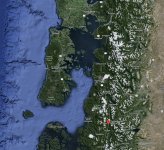
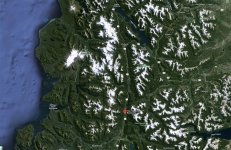
The Patagonian BaseCamp prides itself on providing their guests with the opportunity to fish a different location every day. In addition to floating rivers or fishing lakes, there were overnight options too. Normally, some fishers will be assigned to fish one of three remote “fish camps” on the upper stretches on the local rivers. Here you would float / fish you way down to the camp the first day, stay overnight at the comfortable camp with food already prepared by the cooks at the lodge, and then float / fish your way out to a takeout point. But the crappy weather – rain and wind removed the camps as an option for us.
As the week progressed, our fishing options were increasingly limited by rain and wind. Rain itself is a pain, but it doesn’t prohibit us from fishing, especially with quality rain gear. But heavy rain increases the flow in rivers, especially with the steep slopes in this section of Patagonia. The river levels quickly became too high to fish and the visibility dropped so much that it really wasn’t worth fishing. And the wind made casting really hard and puts you, your fishing partner, and your guide at risk of an inadvertent piercing.
The week ended up being a series of adventures, not necessarily the ones that we had originally envisioned. Let me take you on some of these adventures. My conclusion after two weeks back home: yes, I would certainly go back, but perhaps earlier in the season…
Steve
Preamble: This adventure to Chile had a long gestation, enduring several twists since its inception in 2018-2019. The initial plan was for 6 of us, long-time friends from fishing the St. Joe River in Idaho and Rock Creek in Montana, to travel to Kamchatka in summer 2021 for a weeklong adventure drifting a river there for big rainbows. Booking through the Fly Shop in Redding, Tim had done a similar Kamchatka float trip previously and wanted to share this unique adventure with us – fishing mouse flies to huge rainbows. Then, early in 2020, COVID hit and shut down all travel. The Fly Shop decided to push their summer 2020 bookings to summer 2021 and our summer 2021 booking to summer 2022. But travel was still restricted when summer 2021 rolled around and they repeated the process. Thus, we were scheduled for summer 2023 at earliest. Then, that little kerfuffle broke out between Ukraine and Russia and none of us wanted to travel to Mother Russia under the circumstances.
So, we began to consider other options, such as Alaska in summer or New Zealand or Chile / Argentina in our winter (their summer). These Southern hemisphere options became more viable for me when I retired and could travel at will in winter. We researched various opportunities and decided on the Patagonian BaseCamp. It was highly recommended and offered diverse fishing options. The only time frame that could accommodate a group of our size there was in March, at the end of their season (typically, from after Xmas through mid-March). One original couple had already booked a Caribbean cruise for this time window and had to drop out. But Tim’s brother, Tom, decided to join us. There would be five fishers in our group.
During the long gestation of this trip, members of our group had suffered a) substantial lower back problems, b) sleep apnea, c) diabetes, d) a heart attack, e) a replaced hip, f) a pulmonary embolism, and other health issues. To some extent, our thoughts were “go now while we can…”. It also helped that at Patagonian FishCamp, much / all of the fishing can be done from boats, limiting the need to wade (back and hip issues…). And here we are.
We received a detailed list of items to pack from the Fly Shop. The fly list was heavy on large nymphs (e.g., Pat’s stoneflies, prince nymphs),

streamers (crystal buggers),

and foam flies (Chernobyls and their offspring).

My initial visions of wet wading in shorts and a rash guard on a warm sunny day (you know, Idaho and Montana in summer) casting to big rising trout changed radically as I focused on the weather forecasts for early March in the region. Shit, it would be cold. And as the departure day came closer, the local forecasts were for rain, lots of rain. So, lighter shirts and a fleece vest were replaced by thermal undershirts, heavy rain gear, and a full fleece jacket – wise moves it proved.
Four flights and three days after departing Seattle, I arrived at Patagonian BaseCamp on the banks of the Rio Palena for a week of fishing a remote location.




The lodge’s location just off Hwy. 7, the major road running N-S through Patagonia, provides access to a number of rivers and lakes. The lodge lies in a north-south valley between two sections of the Andes. [We should have been able to see glacially-covered mountains west and east of the lodge, but the low clouds all week blocked any view of the peaks.]. This is one of the narrower sections of Chile (already a narrow country) with the ocean only 40 miles to the west and the border with Argentina about 60 miles to the east. Multiple rivers and lakes drain from the mountains.


The Patagonian BaseCamp prides itself on providing their guests with the opportunity to fish a different location every day. In addition to floating rivers or fishing lakes, there were overnight options too. Normally, some fishers will be assigned to fish one of three remote “fish camps” on the upper stretches on the local rivers. Here you would float / fish you way down to the camp the first day, stay overnight at the comfortable camp with food already prepared by the cooks at the lodge, and then float / fish your way out to a takeout point. But the crappy weather – rain and wind removed the camps as an option for us.
As the week progressed, our fishing options were increasingly limited by rain and wind. Rain itself is a pain, but it doesn’t prohibit us from fishing, especially with quality rain gear. But heavy rain increases the flow in rivers, especially with the steep slopes in this section of Patagonia. The river levels quickly became too high to fish and the visibility dropped so much that it really wasn’t worth fishing. And the wind made casting really hard and puts you, your fishing partner, and your guide at risk of an inadvertent piercing.
The week ended up being a series of adventures, not necessarily the ones that we had originally envisioned. Let me take you on some of these adventures. My conclusion after two weeks back home: yes, I would certainly go back, but perhaps earlier in the season…
Steve
Last edited:

